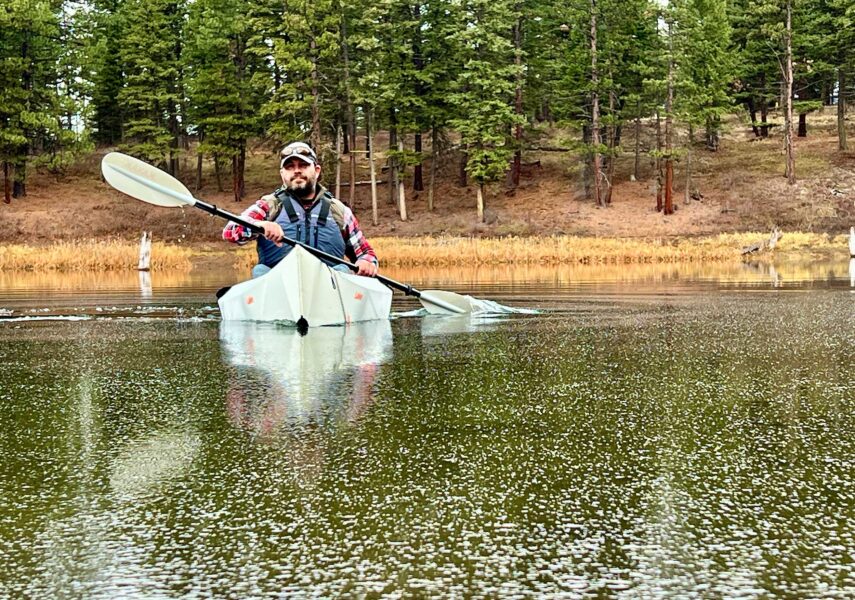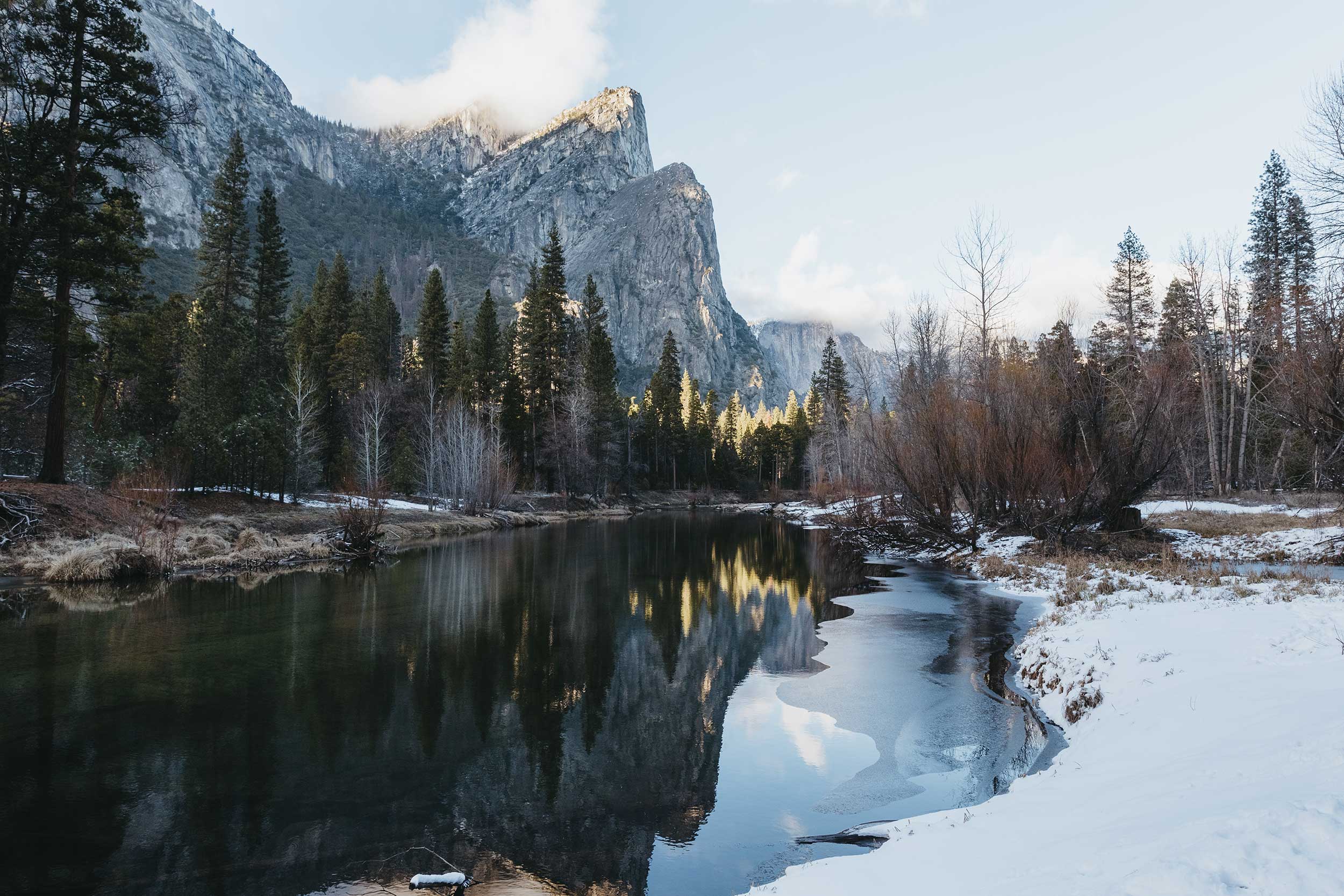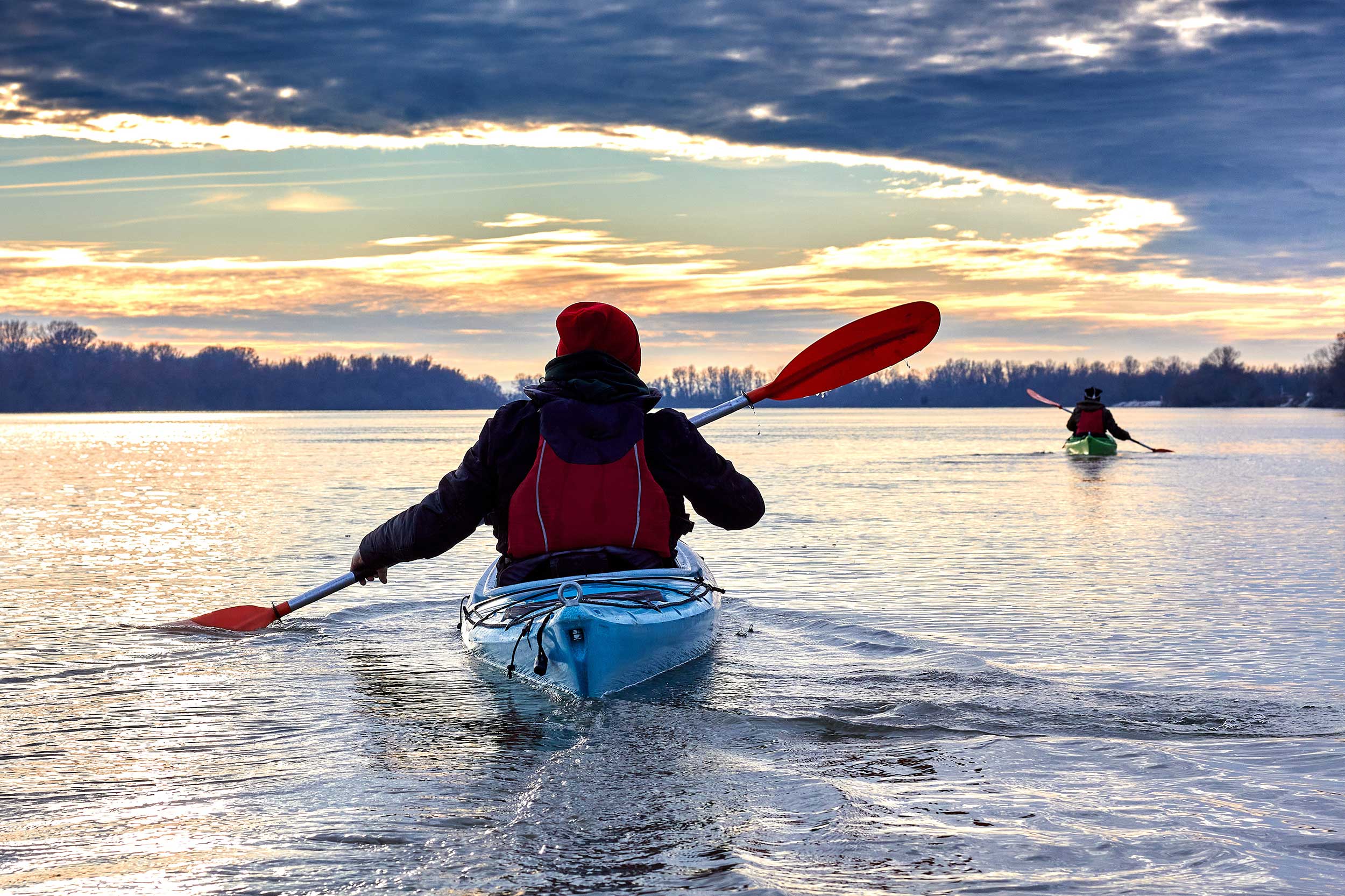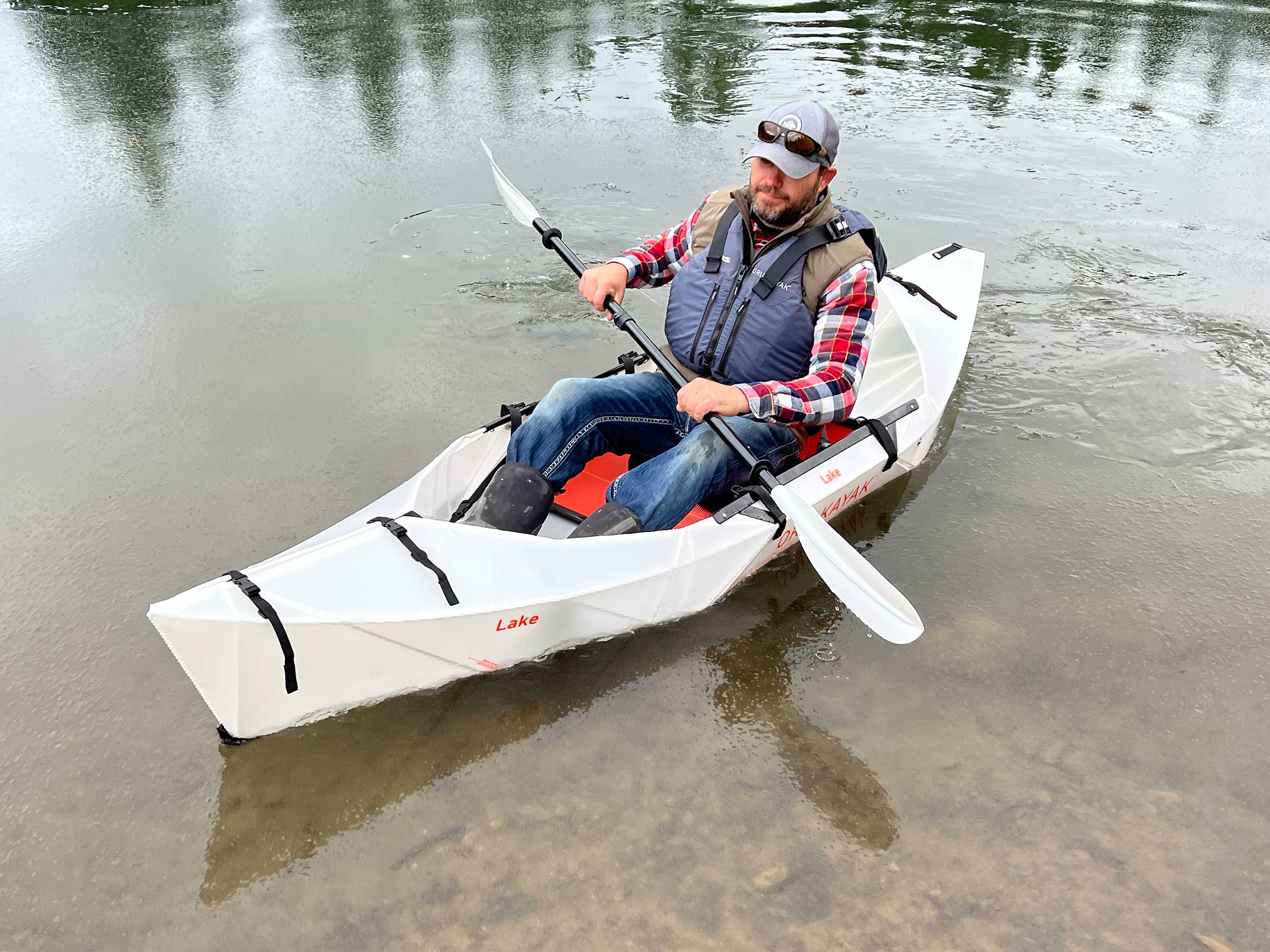
Image by Suzanne Downing
When you think of kayaking, you probably picture warm summer days, crystal-clear lakes, and short sleeve shirts or tank tops. But for those with an adventurous spirit, kayaking doesn’t have to end when temperatures drop. Cold-weather kayaking can be an exhilarating way to experience the beauty of nature in a different (raw) form. And it’s more accessible than you might think (with the right preparation).
Just as people bundle up for Nordic skiing or snowshoeing, you can gear up to enjoy the winter waters. Dressing for the occasion means layers of moisture-wicking and insulating materials, waterproof boots, and, most importantly, a personal flotation device (PFD) to keep you safe. With the right precautions, kayaking in cold weather can be a deeply rewarding experience.
Here’s why braving the cold for a paddle session is worth it, including three top benefits: solitude and serenity, a touch of thrill, and staying active in the off-season.
1. Solitude and Serenity
One of the most compelling reasons to kayak in cold weather is the peaceful solitude you’ll find on the water. While popular kayaking spots might be bustling with activity during warmer months, winter ushers in a quieter, more tranquil atmosphere. The crowds are gone, leaving the waterways almost entirely to you and the occasional bird or otter. In my home state of Montana in cold-weather months, most of the lakes in the area are vacant when arriving with a kayak.

Image by Wirestock Creators, Shutterstock
This calm environment makes cold-weather kayaking ideal for those seeking a meditative experience. Without the noise of other paddlers, you’ll hear the natural sounds of winter: the soft splash of your paddle, the distant call of waterfowl, or the crackle of thin ice breaking along the front of your kayak. These moments of connection with nature are hard to replicate in any other setting.
The visual beauty is different too. Frost-tipped trees, mist rising from the water, and the reflective surfaces of icy lakes create a serene winter wonderland. For photographers or nature enthusiasts, this time of year offers unique landscapes that simply can’t be captured during the summer.
2. A Touch of Thrill
Kayaking always has an element of adventure, but adding cold weather into the mix raises the stakes — just a little. While falling into icy water is not a goal, the mere possibility adds an extra layer of excitement for those who enjoy pushing their boundaries. Navigating brisk conditions gives you a sense of accomplishment, turning an ordinary paddle into a bold outdoor feat.

Image by Chatham172, Shutterstock
That said, safety is paramount. Proper preparation, including wearing a wetsuit or drysuit, makes the activity both thrilling and safe. Ensuring your kayak is in excellent condition and equipped with essential gear, like a paddle leash and an emergency whistle, reduces risks while enhancing your confidence on the water. You’re not out there to flirt with danger, but the chill in the air and the knowledge of the elements make the experience feel adventurous in a way that summer paddling rarely does.
This thrill-seeker element is also a fantastic motivator for building resilience. If you can face the cold and master the art of winter kayaking, you’ll return home with a stronger sense of self-reliance and a great story to share.
3. Exercise and Fresh Air
Winter has a way of making even the most active individuals want to hibernate. Cold-weather kayaking is another activity that can get you off the couch and outdoors. It’s easy to neglect fitness when the days are short and the air is frosty, but kayaking provides a fun, full-body workout that can boost your energy and help fight off the winter blues.
Paddling is a dynamic activity that engages your arms, shoulders, back, and core. The added resistance from heavier winter clothing or a slight current can make it an even more effective workout. Plus, the act of paddling warms you up quickly, turning a potentially frigid outing into a comfortable exercise session.

Image by Suzanne Downing
Beyond the physical benefits, cold-weather kayaking offers significant mental health advantages. Being outside in nature, breathing crisp air, and soaking up the natural light — even on overcast days — can improve your mood and reduce stress. The endorphins from exercising will leave you feeling invigorated and ready to tackle the rest of your day.
And let’s not forget the social aspect. While you might not encounter many others on the water, bringing a friend along for a paddle can turn the outing into a shared adventure. Having a buddy adds an extra layer of safety and doubles the fun.
Tips for Cold-Weather Kayaking
To fully enjoy kayaking in cold weather, preparation is key. Here are some tips to make your outing safe and comfortable:
- Dress in Layers: Use moisture-wicking base layers, insulating mid-layers, and a waterproof outer layer. A wetsuit or drysuit is ideal if there’s a risk of capsizing.
- Protect Your Extremities: Wear gloves or pogies designed for paddling, and invest in waterproof (high) boots to keep your feet warm and dry. I’ve found that boots that protecting your feet, ankles and calves work best.
- Use a PFD: Always wear a personal flotation device, no matter how calm the water appears.
- Pack Safety Gear: Bring a dry bag with essentials like a first-aid kit, a phone in a waterproof case, and a spare set of clothes.
- Stay Close to Shore: Especially if you’re new to cold-weather kayaking, stick to areas where you can easily return to land if needed.
- Paddle with a Partner: Having someone else with you is not only safer but also makes the experience more enjoyable.
Kayaking in cold weather may not be for everyone, but for those willing to try, it opens up a world of quiet beauty, thrilling challenges, and invigorating exercise. By dressing appropriately and taking the necessary precautions, you can turn winter paddling into your new favorite outdoor adventure.
Suzanne Downing is an outdoor writer and photographer in Montana with an environmental science journalism background. Her work can be found in Outdoors Unlimited, Bugle Magazine, Missoulian, Byline Magazine, Communique, MTPR online, UM Native News, National Wildlife Federation campaigns and more.
 Your Privacy Choices
Your Privacy Choices